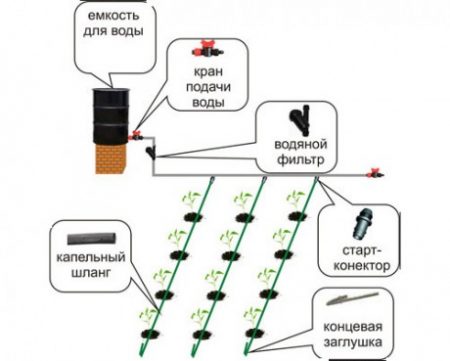 When spring begins, garden work in full swing requires the participation of summer residents in the plots. For many, there is an acute shortage of time, labor, and often there is not enough water for irrigation, electricity, and so on. Therefore, the summer residents came up with drip irrigation in the country with their own hands - you can see in the video, everything is clearly shown, how to build this simple system in your area and enjoy good harvests.
When spring begins, garden work in full swing requires the participation of summer residents in the plots. For many, there is an acute shortage of time, labor, and often there is not enough water for irrigation, electricity, and so on. Therefore, the summer residents came up with drip irrigation in the country with their own hands - you can see in the video, everything is clearly shown, how to build this simple system in your area and enjoy good harvests.
See also: planting tomato for seedlings in 2016.
You can certainly buy a system of automatic watering, but it is costly for any summer resident, it is not yet known what will grow in the garden. Therefore, you can build a drip irrigation system yourself from the droppers and hoses, look at the video in detail how all this can be done.
The advantages of drip irrigation
The principle of operation is simple and understandable - water from the tank gradually, by gravity flows to itself slowly through hoses and drip tapes, and immediately falls under the root, which is what the plant needs. This is good for greenhouse plantings, and for open ground. Water is saved, the soil does not dry out, diseases do not develop, because water does not get on leaves and stems, and does not spread over the beds. It is possible to pour liquid top dressing into the system, and they will immediately fall under the bushes of plants with water. It is very convenient. And if you consider that you can pre-dial a barrel and leave for the city, leaving such independent watering in the country, then it becomes clear that it is very convenient and practical. Even in extreme heat, one won’t have to worry about how poor plants are in the country - have they died from the heat?
disadvantages
Still, there are some minor flaws in the system, here they are: home-made watering still needs to be controlled - droppers can clog, as a result of which puddles can form, the soil will erode, and the roots will rot. Droppers need to be periodically purged and washed, insects can get into the passages and clog them, besides, the holes cannot be increased, so that the pressure does not drop. But - there is nothing perfect, without flaws, and yet in such a system of advantages there are much more.
It is interesting: planting cucumbers in 5 liter bottles.
Simpler drip irrigation - from bottles
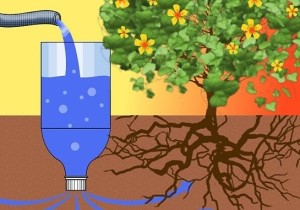
If you don’t want to spend money on hoses, faucets and droppers, and the garden in your country house is not large, then it’s quite possible to build drop watering using the gratuitous material — plastic bottles. Especially if the past summer was hot, often they bought water or a beer and packed up - there is nowhere to put it. So they will find a wonderful application - we will make drop watering out of them. Of course, it is not as effective as a system one, but it has its advantages - a gratuitous material, a simple device, absolutely not troublesome - I did it once, and only periodically pour some water. It is also economically consumed with this method, so the usefulness of such a structure is obvious. Especially if you have problems with water and electricity in your country house, it’s a great way out for your plants, which will save both water and electricity, and it’s normal to give moisture to plants directly under the root in a timely manner.
How to organize "bottle watering"
If the site is not large, and you visit it periodically, plastic bottles will greatly help you. How can they be used for watering? Very simple.
Take a bottle (usually a 1.5-2 liter capacity), cut the bottom, make several holes in the lid or sides, dig more than half the eggplant into the ground between the bushes of cucumbers or tomatoes, pour water and that's it - the water will slowly go through the openings seep out, and act simply to the very roots of the plant. It will not spread on the surface, weeds will not be fed and viruses will be transferred, the crust will not form after cracking with ordinary watering (and it needs to be loosened every time), that is, labor is saved, both water and time. And the plants are good for you too.
But in eggplant water this way will be enough for watering for 2-3 days, so expect your arrival to the country so that your crop does not dry out. This is especially true for cucumbers and peppers, which love moisture and without it suffocate, wither and can disappear.
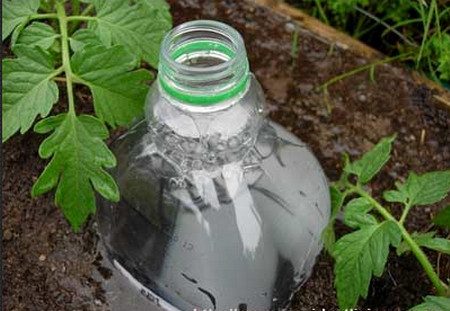
You can also do this: dig the eggplant upside down with the lid up, then the holes will become a nail in the bottom of the bottles - this is convenient to make with a hot nail, and then water is added through the lid. This method captures a larger area than upside down, orient on your site, the proximity of landings, which suits you best.
Look at the figure, how the irrigation occurs between two bushes and it will become clear that it is very convenient, and it is useful to plants.
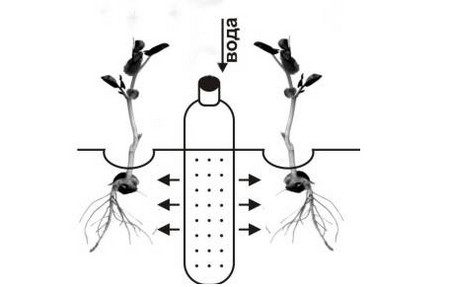
If the roots of the plants are very close to the surface and there is no washout to dig in the eggplant, then it is possible to arrange hanging water from such bottles.
It is only necessary not to suspend them especially high so that falling from above, the drops do not erode the roots, and it is best to mulch a little with straw or foliage of the plant, and then the moisture falling from the bottles will fall directly under the mulch and be preserved from sunlight. Moisture does not evaporate, you know the water is dripping slowly, the roots get a little moisture all the time, there is no over-humidification - an excellent option for irrigation for a busy owner or summer clerk, not often in the area.
See also: cucumbers in a polycarbonate greenhouse: planting and care.

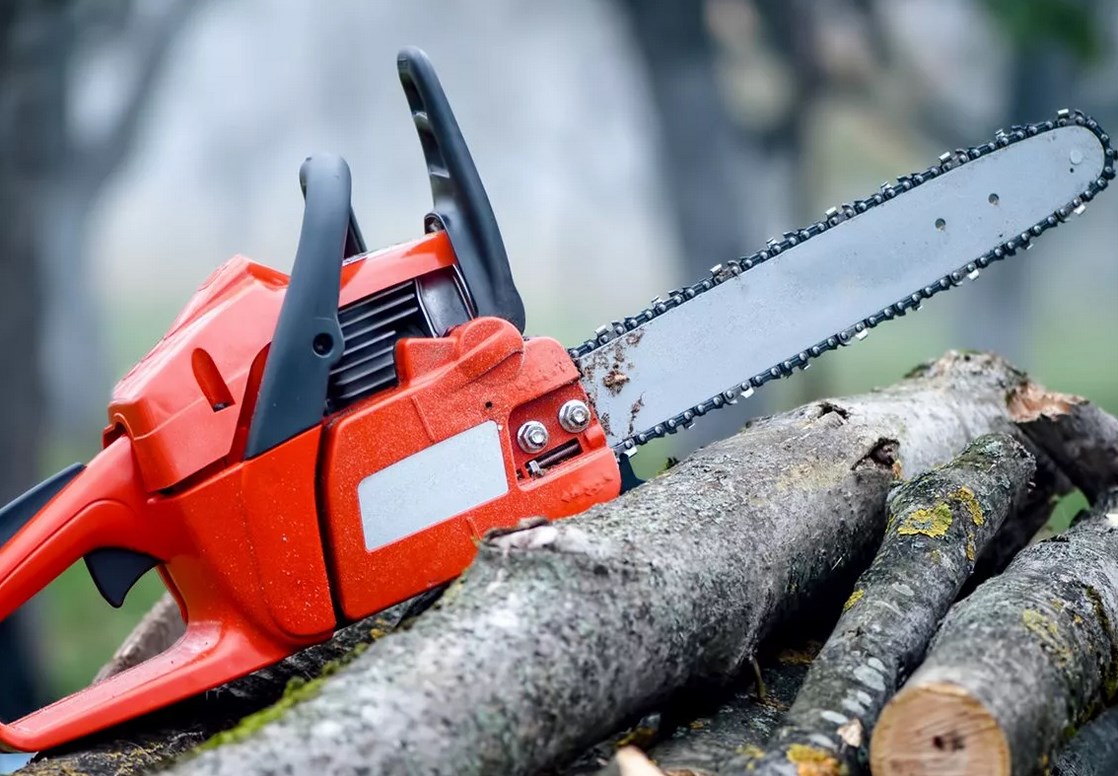
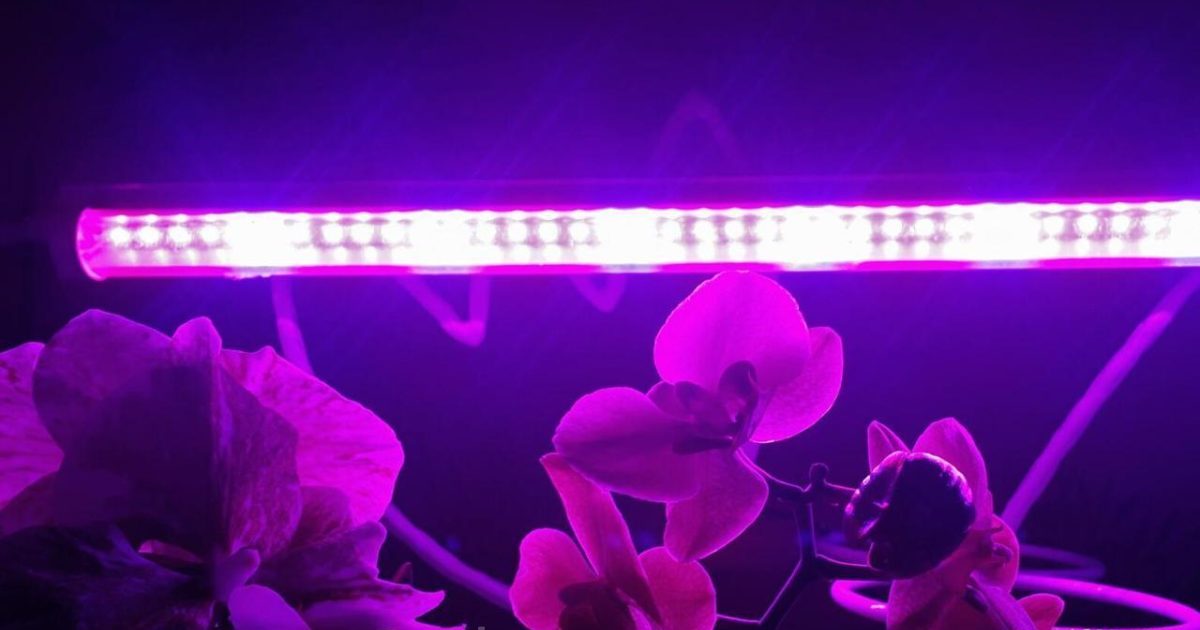
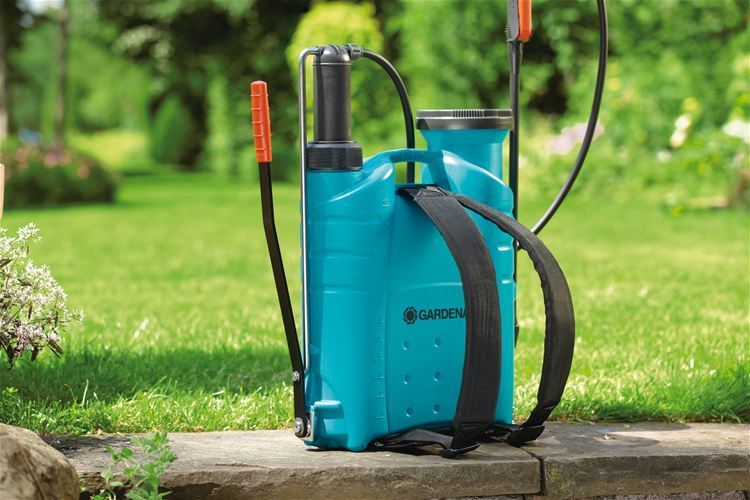
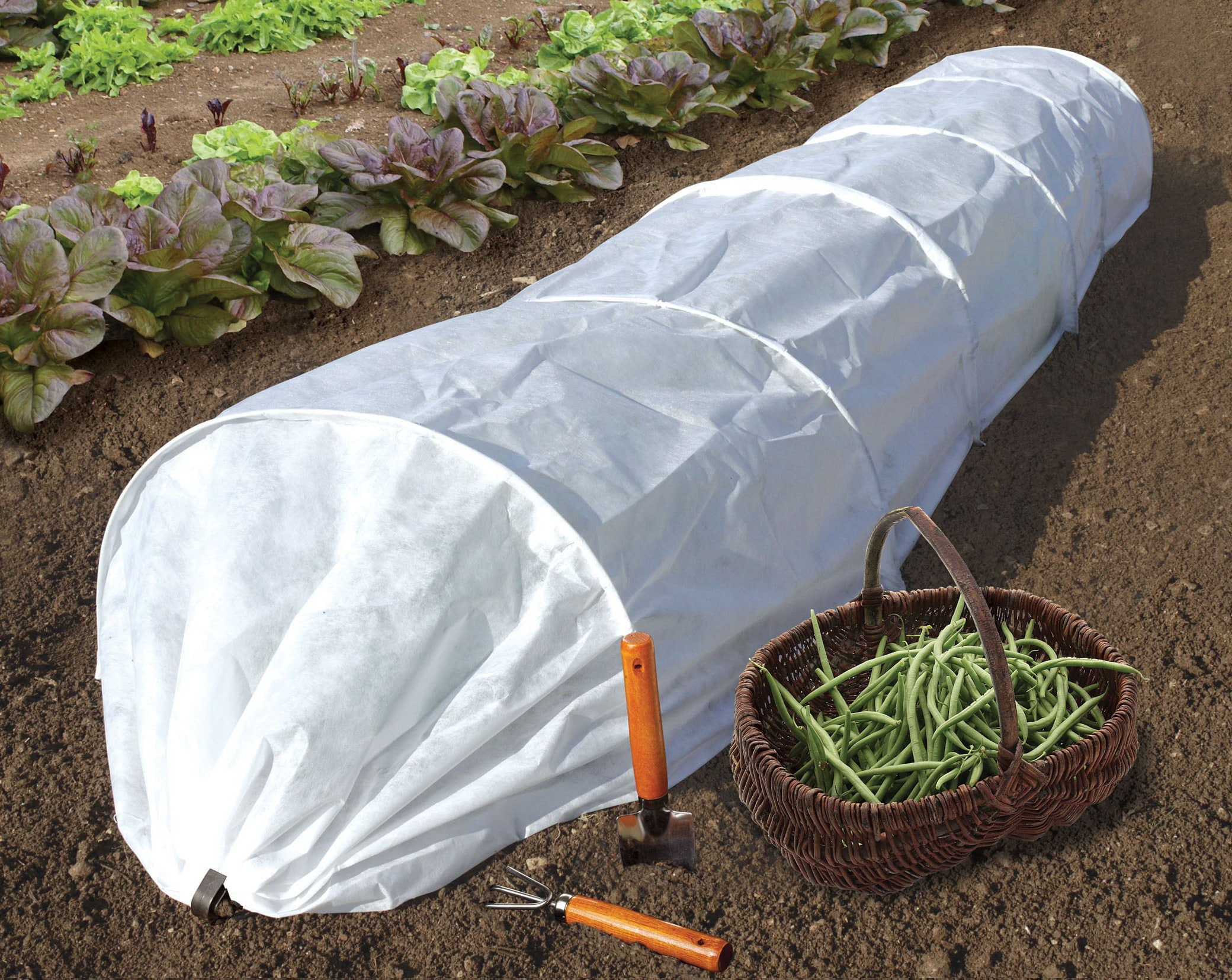 Cover material for plant care: features of use
Cover material for plant care: features of use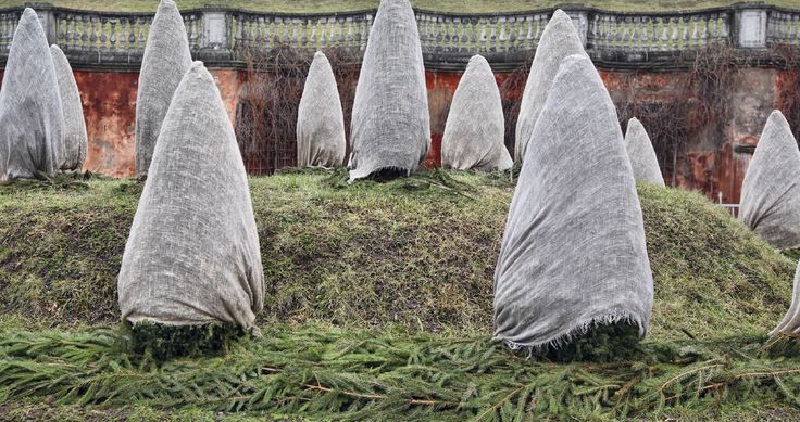 Types of winter covering material for plants
Types of winter covering material for plants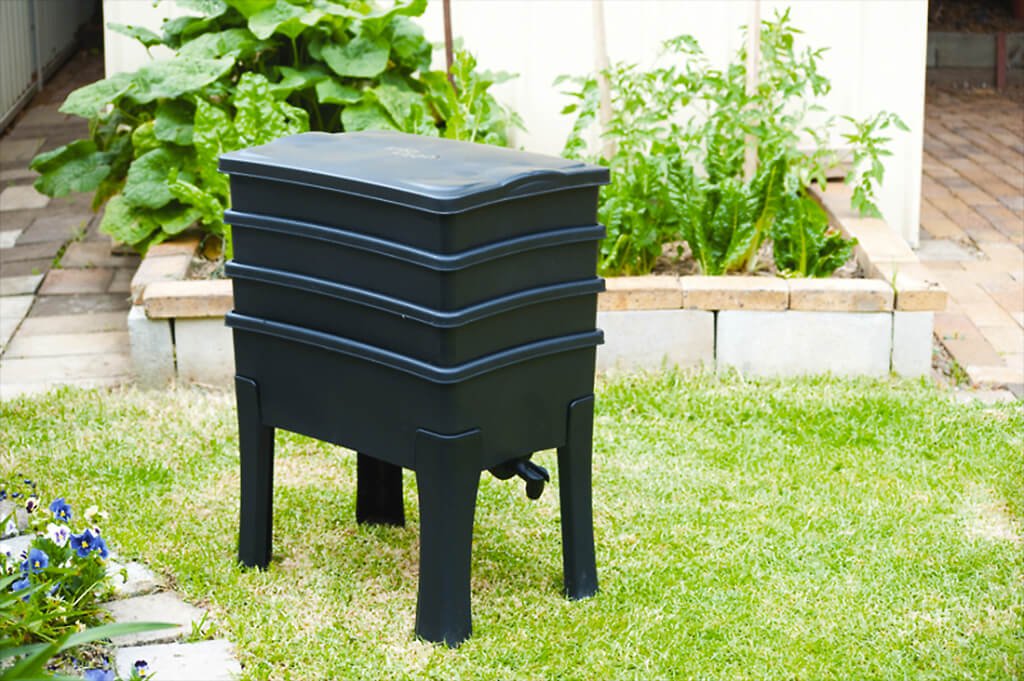 Biohumus Farm
Biohumus Farm What covering material to choose for a greenhouse?
What covering material to choose for a greenhouse?